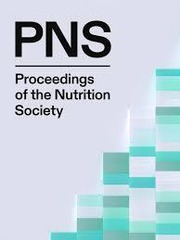Article contents
Nutritional modulation of immune function
Published online by Cambridge University Press: 05 March 2007
Abstract
The inflammatory response to injury and infection, although an essential part of immune function, carries the risk of severe tissue depletion and immunosuppression. These outcomes increase morbidity and delay recovery. Evidence is accumulating that single-nucleotide polymorphisms in the genes controlling pro-inflammatory cytokine production adversely influence the response. Immunonutrition provides a means of modulating the inflammatory response to injury and infection, and thereby improves clinical outcome. n-3 Polyunsaturated fatty acids (n-3 PUFA), glutamine, arginine, S amino acids and nucleotides are important components of immunonutrient mixes. While animal model studies suggest that all these components may exert a beneficial effect in patients, the number of large randomized placebo-controlled trials utilizing immunonutrition is fairly limited and the observed effects are relatively small. Meta-analyses suggest that while immunonutrition may not reduce mortality rates, a reduction in hospital length of stay, decreased requirements for ventilation and lower infection rates are achieved by this mode of nutrition. The present paper discusses some underlying reasons for the difficulty in demonstrating the clinical efficacy of immunonutrition. Paramount among these reasons is the antioxidant status and genetic background of the patient. A number of studies suggest that there is an inverse relationship between inflammation and T-cell function. Immuno-enhancive effects have been shown in a number of studies in which n-3 PUFA, glutamine and N-acetyl cysteine have been employed. All these nutrients may exert their effects by suppressing inflammation; n-3 PUFA by direct suppression of the process and glutamine and N-acetyl cysteine by acting indirectly on antioxidant status. Glutamine and nucleotides exert a direct effect on lymphocyte proliferation. Preliminary data suggests that not all genotypes are equally sensitive to the effects of immunonutrition. When further studies have been conducted to discern the precise interaction between each individual's genotype of relevance to the response to injury and infection, and immunonutrients, the level of precision in the application of immunonutrition will undoubtedly improve.
Keywords
Information
- Type
- Symposium on ‘Evidence-based nutrition’
- Information
- Copyright
- Copyright © The Nutrition Society 2001
References
- 154
- Cited by

